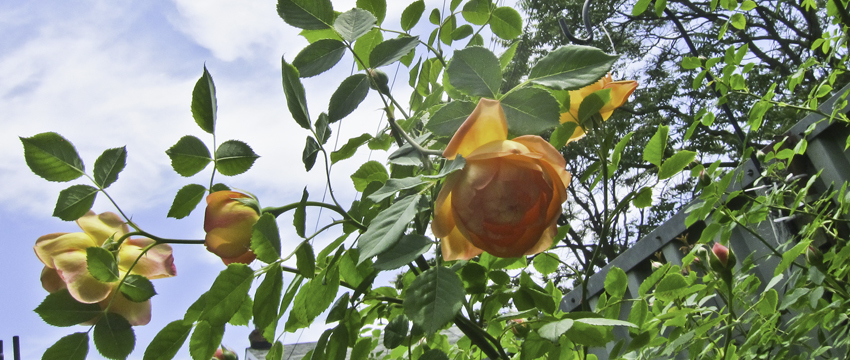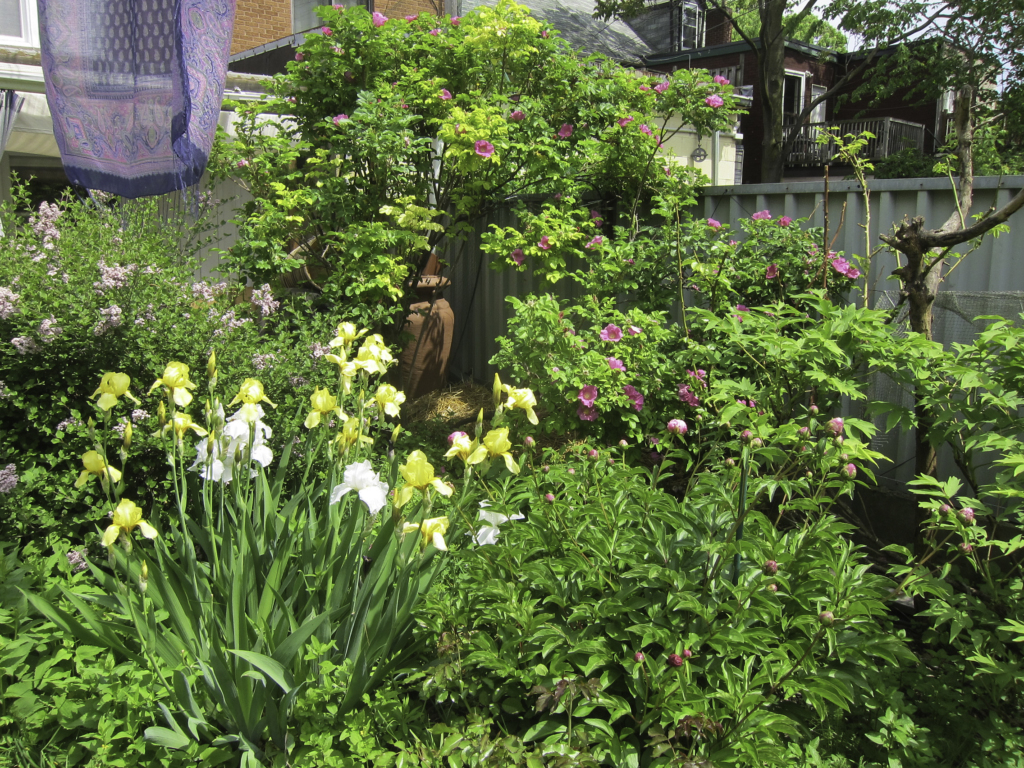The morning after the PC voting binge that promises to give us a monumental social and economic hangover, I had a severe attack of doom and gloom.
Living in Toronto’s Kensington Market, where affordable housing, homelessness, and poverty are daily concerns for many of my neighbours, it would have been easy to think myself into an angry, depressed funk. Not good, and pointless; wouldn’t have helped anyone.
Sitting in the garden drinking my coffee and poking around the web looking for something positive to latch on to, I realized that the positive was right in front of me: the garden itself.
It’s messy, disorganized, riddled with weeds – but it’s beautiful, and it’s one of the touchstones of my life.
It’s a sort of accidental garden; fourteen years ago, when I took it over, it was a tangled mat of thorny Chinese bittersweet backed by a thicket of Japanese knotweed and dotted with patches of belladonna, miscellaneous aggressive weeds, scraggly bluebells, clumps of garlic chives. and something that looked like a relative of buckwheat with half-meter deep roots.
It had obviously been somebody’s much-loved, probably vegetable, garden at some point, but it had been neglected and used as a random dump for years. Every shovelful of soil turned up broken glass, plastic shards, metal scraps, bits of bone, mussel shells, pieces of construction waste and other rubbish.
Trash aside, I lucked out – under the topsoil, there’s clay. I love roses; I wanted a rose garden, and it turns out that roses love clay.
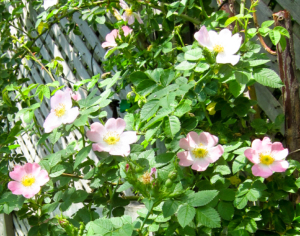 As I reclaimed patches of soil from the resident weeds & waste, the first things I planted were roses. For the first ten years, I planted a few more each year until now, I’ve got a couple of dozen kinds of roses. Some of them, more than one bush – the antique roses like the eglantine and the apothecary rose are actually invasive – slower than mint, but just as determined. If I let them, they’d take over!
As I reclaimed patches of soil from the resident weeds & waste, the first things I planted were roses. For the first ten years, I planted a few more each year until now, I’ve got a couple of dozen kinds of roses. Some of them, more than one bush – the antique roses like the eglantine and the apothecary rose are actually invasive – slower than mint, but just as determined. If I let them, they’d take over!
The early summer roses, like Lady of Shallot at the top of the post, the pink & white eglantine at the right (which was a favourite of Queen Elizabeth the First) and the Rosa Rugosa Rubra at the bottom of the post are flowering now. I’ve got lots more roses to look forward to this year – a couple even continue blooming into December!
Eventually, as I cleaned up, I planted lots of other things among the roses – peonies, an  apple tree, the tiny potted Mongolian lilac that was a survivor from a previous patio garden, a juniper, rhubarb, bulbs, herbs, poppies, carnations, raspberries, clematis, strawberries, vinca, bee balm, columbine, a fern. I don’t remember everything that’s there now; it wasn’t really planned. Sort of a magpie garden, and the bees love it.
apple tree, the tiny potted Mongolian lilac that was a survivor from a previous patio garden, a juniper, rhubarb, bulbs, herbs, poppies, carnations, raspberries, clematis, strawberries, vinca, bee balm, columbine, a fern. I don’t remember everything that’s there now; it wasn’t really planned. Sort of a magpie garden, and the bees love it.
Some plants I bought, some I grew from seed, some were gifts 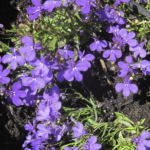 from neighbours & friends. Most survived and thrived, some died, some are trying to take over. Some, I have to baby along. Some, I have to discourage. An occasional one I’m trying to eradicate.
from neighbours & friends. Most survived and thrived, some died, some are trying to take over. Some, I have to baby along. Some, I have to discourage. An occasional one I’m trying to eradicate.
(Don’t plant soapwort or feverfew outside a container – they’re pushier than mint!)
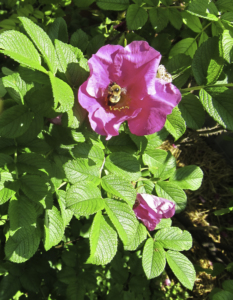 It’s a work in progress, a living organism. Sitting watching the bees work in the ten-foot-tall Rosa Rugosa Rubra that was one of the first things I planted here is an antidote for the depressing election results.
It’s a work in progress, a living organism. Sitting watching the bees work in the ten-foot-tall Rosa Rugosa Rubra that was one of the first things I planted here is an antidote for the depressing election results.
In its various incarnations, the garden’s been here for 143 years, and odds are good that it will last longer than the Doug Ford government. Or even Doug Ford.
